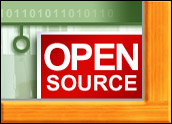
Most anyone in the free and open source software realm can tell you not only that Linux is better than Windows, but also that it is an optimal alternative to the closed-source and proprietary operating system from Microsoft. Anyone at a Linux-oriented event or group can assure you that you have no need or even legitimate reason to continue using commercial operating systems nowadays.
Indeed, GNU and Linux have radically transformed software development and systems administration in practice and in culture, but to replace Windows broadly, it is essential to accommodate the influx of commercial software refugees.
Spread the Word
Improving Linux education is a critical task because it enhances the existing infrastructure by making more users more proficient, leading to increased demand for and availability of Linux-based products and services.
Obviously, Linux education exists in some form since it got us to where we are now. To be sure, the Linux community has produced a wealth of support materials. From the kernel itself to specific applications, we have main pages, Web-based tutorials, and Internet Relay Chat (IRC) channels dedicated to support.
Even better, people in the Linux community are generally friendly and responsive, and many of them will respond to specific questions not otherwise addressed in support resources. Supplementing these useful online resources, many areas also have Linux user groups (LUGs) where we can get together in person.
I have visited a number of LUGs in different cities around the United States, and I have been consistently impressed with the level of dedication in the people I meet at these groups. Linux user groups are a testament to the power of freedom in software and organization. Furthermore, they demonstrate that top-down organization and uniform guidelines are neither required nor necessarily important for a group to exist and flourish.
The established channels for education and support have brought Linux-based operating systems amazingly far by making free and open source software viable and desirable, even for governments and large corporations.
Vicious Cycle
Despite the very real and impressive advances, though, Linux is rarely deployed as a desktop workstation operating system unless the organization is compelled to use it in that way because of budgetary constraints. Because some of these organizations cannot commit the resources to hiring administrators or at least professional consultants, they sometimes grow resentful of Linux and open source technology, seeing them more as distractions from their primary business than as the useful tools they are.
Additionally, their not hiring professionals inevitably means fewer admins and consultants get commercial experience working on Linux as a desktop platform. Also, with fewer prospects for work supporting desktops and local networks, fewer technology professionals feel compelled to use Linux-based operating systems as desktop systems.
If this Catch-22 sounds awfully similar to the sometimes-dubious explanation that some hardware manufacturers offer, that they do not support Linux due to insufficient demand, that’s probably because it is.
The solution to both hardware support and more widespread acceptance of Linux-based systems as desktop workstations in the marketplace is to raise the bar for everyone. Providing the means for basic users to become advanced and advanced users to become administrators helps remedy the issues of the small businesses and non-profits that use Linux but fail to get the most out of it, as well as the argument of the hardware manufacturers who insist they would support Linux if only it were more widely used.
Build the Base
When the educational base is more thoroughly established, Linux will supplant the commercial operating systems on more systems because more users will be familiar with it. When more users are familiar and proficient with Linux-based systems, the entire free and open source bazaar grows and improves.
Above all else, Linux is a paradigm, or a way of doing things; rather than needing to know every detail, users can start using it and getting results by just knowing what to expect. Computer technology grows more sophisticated by the day, and to keep improving free and open source software, we need a sophisticated and flexible educational infrastructure that allows users to reach their desired goals as quickly and as easily as possible.
Since today’s newbies are tomorrow’s leading engineers, the sooner we get the tools in place to teach them the important lessons they will need in the field, the sooner we can start using the amazing software they will eventually develop.
Jeremiah T. Gray is a LinuxInsider columnist, software developer, sysadmin, and technology entrepreneur. He is a director of Intarcorp Ltd., publisher of the Linux-oriented educational comic book series, “Hackett and Bankwell.”


















































Ask any Windows user why they won’t switch to Linux and you get the these two reasons most of the time: Poor hardware support, and needing to use the command line.
The first is getting better. Number two not so much. I’m continually amazed at the people who try a Distro, then use Google, as they do when fixing a Windows issue, and pooch the install by following the advice. The advice usually involves a bash shell. I can understand the need. With no single GUI, the command prompt is the best way of passing instructions and insuring they’ll work. It is amazing, though, that many people will totally screw an install of even noob friendly Ubuntu totally unaware of Synaptic. GUI Package management is probably the biggest advantage Linux has to a novice. Yet it gets almost no play.
I’ve shown a couple of people who had been using computers since the DOS day, one started on CPM, where the GUI package manager was. One had totally screwed his install from doing the normal Google search and going to separate websites trying to install nonfree multimedia extentions and programs. I told him to open Synaptics and search for restricted-extras. After seeing how one click would have done the job and kept it updated automatically, he asked me why this was hidden away? I had no good answer.
Google learning Linux. The vast majority of sites are collections of using the command line. I’m not against people learning to use the command line, it’s one of the reasons we have such a powerful OS. But it’s stupid to continually tell people what they’ve heard about needing to spend time there is false when it’s hard to find supporting evidence using what has become the first step in Windows troubleshooting. We need to do a better job on this.